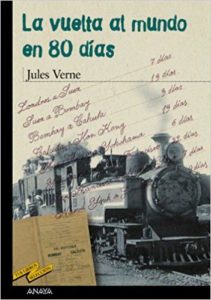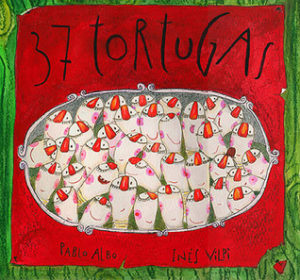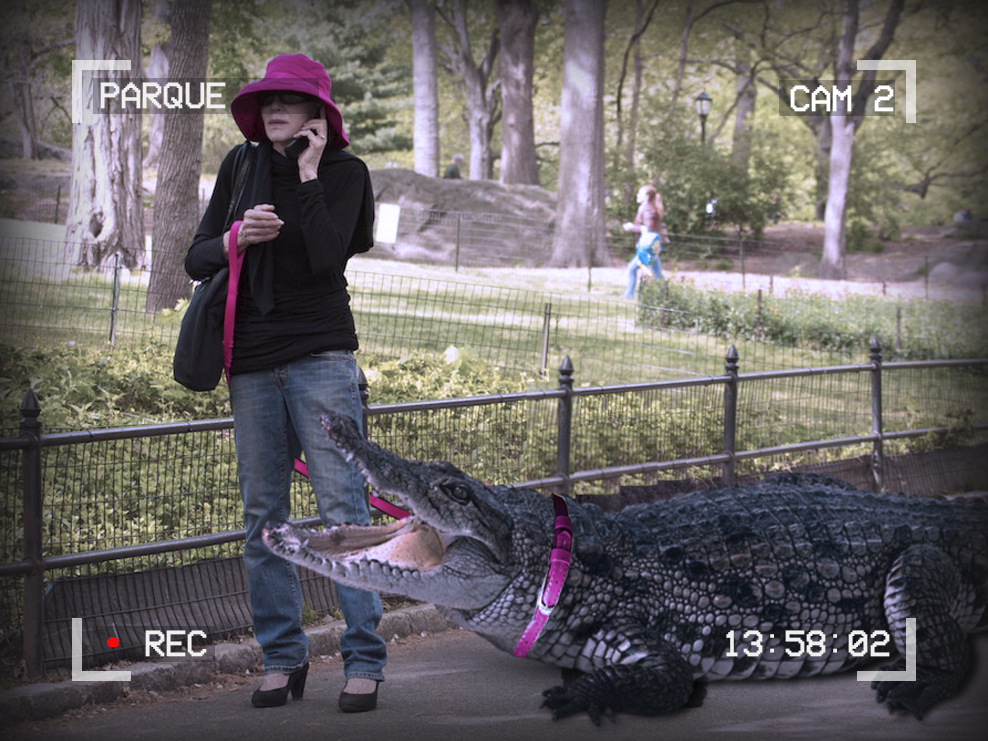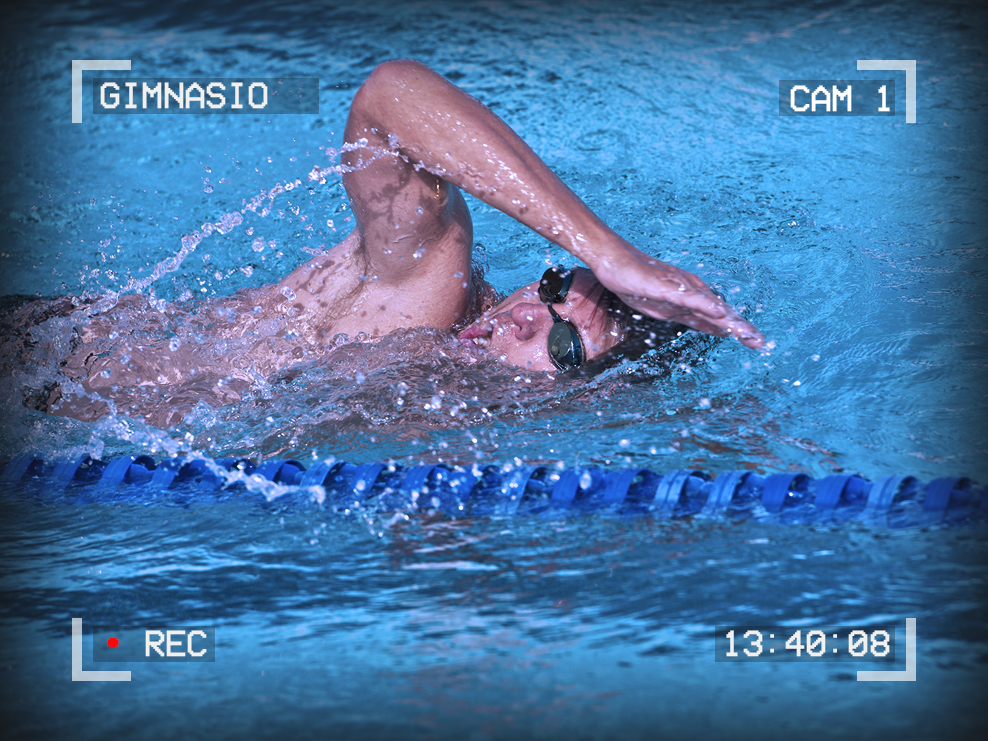12.3: Actividades- ¿Qué clases tomas?
- Page ID
- 114092
\( \newcommand{\vecs}[1]{\overset { \scriptstyle \rightharpoonup} {\mathbf{#1}} } \)
\( \newcommand{\vecd}[1]{\overset{-\!-\!\rightharpoonup}{\vphantom{a}\smash {#1}}} \)
\( \newcommand{\id}{\mathrm{id}}\) \( \newcommand{\Span}{\mathrm{span}}\)
( \newcommand{\kernel}{\mathrm{null}\,}\) \( \newcommand{\range}{\mathrm{range}\,}\)
\( \newcommand{\RealPart}{\mathrm{Re}}\) \( \newcommand{\ImaginaryPart}{\mathrm{Im}}\)
\( \newcommand{\Argument}{\mathrm{Arg}}\) \( \newcommand{\norm}[1]{\| #1 \|}\)
\( \newcommand{\inner}[2]{\langle #1, #2 \rangle}\)
\( \newcommand{\Span}{\mathrm{span}}\)
\( \newcommand{\id}{\mathrm{id}}\)
\( \newcommand{\Span}{\mathrm{span}}\)
\( \newcommand{\kernel}{\mathrm{null}\,}\)
\( \newcommand{\range}{\mathrm{range}\,}\)
\( \newcommand{\RealPart}{\mathrm{Re}}\)
\( \newcommand{\ImaginaryPart}{\mathrm{Im}}\)
\( \newcommand{\Argument}{\mathrm{Arg}}\)
\( \newcommand{\norm}[1]{\| #1 \|}\)
\( \newcommand{\inner}[2]{\langle #1, #2 \rangle}\)
\( \newcommand{\Span}{\mathrm{span}}\) \( \newcommand{\AA}{\unicode[.8,0]{x212B}}\)
\( \newcommand{\vectorA}[1]{\vec{#1}} % arrow\)
\( \newcommand{\vectorAt}[1]{\vec{\text{#1}}} % arrow\)
\( \newcommand{\vectorB}[1]{\overset { \scriptstyle \rightharpoonup} {\mathbf{#1}} } \)
\( \newcommand{\vectorC}[1]{\textbf{#1}} \)
\( \newcommand{\vectorD}[1]{\overrightarrow{#1}} \)
\( \newcommand{\vectorDt}[1]{\overrightarrow{\text{#1}}} \)
\( \newcommand{\vectE}[1]{\overset{-\!-\!\rightharpoonup}{\vphantom{a}\smash{\mathbf {#1}}}} \)
\( \newcommand{\vecs}[1]{\overset { \scriptstyle \rightharpoonup} {\mathbf{#1}} } \)
\( \newcommand{\vecd}[1]{\overset{-\!-\!\rightharpoonup}{\vphantom{a}\smash {#1}}} \)
\(\newcommand{\avec}{\mathbf a}\) \(\newcommand{\bvec}{\mathbf b}\) \(\newcommand{\cvec}{\mathbf c}\) \(\newcommand{\dvec}{\mathbf d}\) \(\newcommand{\dtil}{\widetilde{\mathbf d}}\) \(\newcommand{\evec}{\mathbf e}\) \(\newcommand{\fvec}{\mathbf f}\) \(\newcommand{\nvec}{\mathbf n}\) \(\newcommand{\pvec}{\mathbf p}\) \(\newcommand{\qvec}{\mathbf q}\) \(\newcommand{\svec}{\mathbf s}\) \(\newcommand{\tvec}{\mathbf t}\) \(\newcommand{\uvec}{\mathbf u}\) \(\newcommand{\vvec}{\mathbf v}\) \(\newcommand{\wvec}{\mathbf w}\) \(\newcommand{\xvec}{\mathbf x}\) \(\newcommand{\yvec}{\mathbf y}\) \(\newcommand{\zvec}{\mathbf z}\) \(\newcommand{\rvec}{\mathbf r}\) \(\newcommand{\mvec}{\mathbf m}\) \(\newcommand{\zerovec}{\mathbf 0}\) \(\newcommand{\onevec}{\mathbf 1}\) \(\newcommand{\real}{\mathbb R}\) \(\newcommand{\twovec}[2]{\left[\begin{array}{r}#1 \\ #2 \end{array}\right]}\) \(\newcommand{\ctwovec}[2]{\left[\begin{array}{c}#1 \\ #2 \end{array}\right]}\) \(\newcommand{\threevec}[3]{\left[\begin{array}{r}#1 \\ #2 \\ #3 \end{array}\right]}\) \(\newcommand{\cthreevec}[3]{\left[\begin{array}{c}#1 \\ #2 \\ #3 \end{array}\right]}\) \(\newcommand{\fourvec}[4]{\left[\begin{array}{r}#1 \\ #2 \\ #3 \\ #4 \end{array}\right]}\) \(\newcommand{\cfourvec}[4]{\left[\begin{array}{c}#1 \\ #2 \\ #3 \\ #4 \end{array}\right]}\) \(\newcommand{\fivevec}[5]{\left[\begin{array}{r}#1 \\ #2 \\ #3 \\ #4 \\ #5 \\ \end{array}\right]}\) \(\newcommand{\cfivevec}[5]{\left[\begin{array}{c}#1 \\ #2 \\ #3 \\ #4 \\ #5 \\ \end{array}\right]}\) \(\newcommand{\mattwo}[4]{\left[\begin{array}{rr}#1 \amp #2 \\ #3 \amp #4 \\ \end{array}\right]}\) \(\newcommand{\laspan}[1]{\text{Span}\{#1\}}\) \(\newcommand{\bcal}{\cal B}\) \(\newcommand{\ccal}{\cal C}\) \(\newcommand{\scal}{\cal S}\) \(\newcommand{\wcal}{\cal W}\) \(\newcommand{\ecal}{\cal E}\) \(\newcommand{\coords}[2]{\left\{#1\right\}_{#2}}\) \(\newcommand{\gray}[1]{\color{gray}{#1}}\) \(\newcommand{\lgray}[1]{\color{lightgray}{#1}}\) \(\newcommand{\rank}{\operatorname{rank}}\) \(\newcommand{\row}{\text{Row}}\) \(\newcommand{\col}{\text{Col}}\) \(\renewcommand{\row}{\text{Row}}\) \(\newcommand{\nul}{\text{Nul}}\) \(\newcommand{\var}{\text{Var}}\) \(\newcommand{\corr}{\text{corr}}\) \(\newcommand{\len}[1]{\left|#1\right|}\) \(\newcommand{\bbar}{\overline{\bvec}}\) \(\newcommand{\bhat}{\widehat{\bvec}}\) \(\newcommand{\bperp}{\bvec^\perp}\) \(\newcommand{\xhat}{\widehat{\xvec}}\) \(\newcommand{\vhat}{\widehat{\vvec}}\) \(\newcommand{\uhat}{\widehat{\uvec}}\) \(\newcommand{\what}{\widehat{\wvec}}\) \(\newcommand{\Sighat}{\widehat{\Sigma}}\) \(\newcommand{\lt}{<}\) \(\newcommand{\gt}{>}\) \(\newcommand{\amp}{&}\) \(\definecolor{fillinmathshade}{gray}{0.9}\)(Note: The activities on this page are designed to promote active communication in Spanish. In an online course, your instructor may ask you to complete the activities using a separate tool, such as video/voice recording or web-conferencing software. Even if the activities are not assigned as coursework, they can be used for individual practice and review.)
- Actividades: Verbos -ar/ Números 30-100
- Actividades: Verbos regulares con –ar
- Actividades: ¿Qué hora es?
Actividades: Verbos -ar/ Números 30-100
A.  ¡Bingo!
¡Bingo!
The following link brings up a randomly-generated bingo card (each one is different). When you hear a number on your card, click it to mark the square.
https://course-building.s3-us-west-2.amazonaws.com/Spanish/bingo/bingo.html
B.  ¿Como se dicen los títulos? (How would you say these book titles?)
¿Como se dicen los títulos? (How would you say these book titles?)














¿Cuál libro compras para ti? ¿Cuál libro compras para tu amig@?
C.  En un restaurante
En un restaurante

You went out to dinner with a friend who introduced you to several people in a large group. You asked the mesero to bring everyone their own individual cuenta. You and your partner use a credit card, but the rest of the group all pay in cash. When the mesero returns, all the change is scrambled. Work with your partner to determine the amount of change due.
- Estudiante 1
-
Paso 1: You have the cuentas of everyone in the group. Share with your partner how much each cuenta was. Your partner has made a list of how much everyone paid. Get the missing information from your partner and use it to fill out the chart. Then, decide how much change each person should get back. Be sure to say the numbers in Spanish! Hint: $12.90 in Spanish is doce dólares con noventa centavos.
Cuenta Pagó (paid) Cambio (change needed) Sofía 24.86 USD Raúl 22.47 USD Felipe 13.12 USD Luis 14.92 USD Soraya 27.25 USD Paso 2: Double check that you gave each person the right amount of change. Write the name of the party member next to the corresponding amount of money s/he should have received.
___________________________ cinco dólares con ocho centavos ___________________________ dos dólares con setenta y cinco centavos ___________________________ seis dólares con ochenta y ocho centavos ___________________________ dos dólares con cincuenta y tres centavos ___________________________ cinco dólares con catorce centavos
- Estudiante 2
-
Paso 1: You have made a list of how much everyone paid. Your partner has the cuentas of everyone in the group. Share with your partner how much each person paid. Get the information from your partner and use it to fill out the chart. Then, decide how much change each person should get back. Be sure to say the numbers in Spanish! Hint: $12.90 in Spanish is doce dólares con noventa centavos.
Cuenta Pagó (paid) Cambio (change needed) Sofía $30 Raúl $25 Felipe $20 Luis $20 Soraya $30 Paso 2: Double check that you gave each person the right amount of change. Write the name of the party member next to the corresponding amount of money s/he should have received.
___________________________ cinco dólares con ocho centavos ___________________________ dos dólares con setenta y cinco centavos ___________________________ seis dólares con ochenta y ocho centavos ___________________________ dos dólares con cincuenta y tres centavos ___________________________ cinco dólares con catorce centavos
Actividades: Verbos regulares con –ar
A.  Hablando del semestre en la Universidad
Hablando del semestre en la Universidad
Talk to your partner, guiding your conversation with the following questions. Be sure to conjugate the verbs in the brackets on the line according to the subject. If the conversation develops further, feel free to talk and practice (usar “yo también” (me too) o “yo tampoco” (me neither) si es necesario) ¡OJO! There may be a need for some infinitives.
- –¿Cómo está tu semestre de otoño (fall) /de primavera (spring)?
–Está _______________ (bien/muy ocupado/muy difícil/muy fácil/un poco complicado/no muy complicado). ¿Y tú? - –¿Cuántas clases [tomar] ________________? ¿Cuántos créditos?
–[Tomar] _______________ clases, y son _______________ créditos. ¿Y tú? - –¿Cómo [ser] _______________ tu horario cada día de la semana?
–Los (lunes/martes/etc.) yo [tomar] ________________. ¿Y tú? - –¿[Trabajar] ________________? ¿Dónde? ¿Cuándo (when)?
–Sí, [trabajar] ________________ en _______________, los (lunes/martes/etc.) / No, no [trabajar] ________________. ¿Y tú? - –¿[Necesitar] ________________ [trabajar] ________________? ¿[Necesitar] ________________ más dinero?
–Sí, [necesitar] ________________ un trabajo y tener más dinero. / No, no [necesitar] ________________ un trabajo, [necesitar] ________________. ¿Y tú? - –¿[Necesitar] ________________ [estudiar] ________________ más? ¿Para cuál clase [necesitar] ________________ [estudiar] ________________ más?
–Sí, [necesitar] ________________ [estudiar] ________________ más para (matemáticas/biología/etc.). / No, estoy bien, no [necesitar] ________________ [estudiar] ________________ más. ¿Y tú?
B.  Guardias de Seguridad
Guardias de Seguridad

You and your partner are security guards. Unfortunately, your monitors are not working very well. You’ll have to work together to get a complete view of the situations on campus. For each location, start with camera 1. If your camera 1 is working, ask a yes/no question in Spanish regarding what you see. Then your partner will answer using the information they see in their camera. If your camera 1 isn’t working, your partner will describe the scene. Use the following extra words to guide you.
Modelo: Student 1 does not see camera 1 in the library.
Estudiante 1: ¿Una cabra mastica los libros en la biblioteca?
Estudiante 2: No. Los estudiantes estudian en la biblioteca.
| Active -ar verbs:
ayudar |
New -ar verbs:
tocar guitarra (eléctrica) Extra words: la cabra (goat) |
You can take notes on this Incident Report form.
Click on the appropriate link below to see your bank of monitors.
- Estudiante 1
-














- Estudiante 2
-














Actividades: ¿Qué hora es?
A.  Relojes
Relojes
Listen to your instructor read what time it is. Draw the hands on each clock showing the time.
 |
 |
 |
 |
B.  A que hora _____?
A que hora _____?
Complete the following statements using time references.
1) Mi clase de español es ______________________________
2) Ahora (now) ______________________________________
3) Nosotros llegamos a la universidad ___________________________________
4) Tú estudias _____________________________________________________
5) Regreso a mi casa _______________________________________________
C.  Entrevista (interview)
Entrevista (interview)
You and your partner interview each other to find out what time you do different things. Write down your partner’s answers so you can inform the class later.
Modelo: Isabel, ¿a qué hora estudias el español?
—Yo estudio el español a las seis de la mañana.
—Isabel estudia el español ¡a las seis de la mañana!
- ¿A qué hora estudias el español?
- ¿A qué hora es tu clase favorita?
- ¿A qué hora miras la televisión?
- ¿A qué hora caminas con el perro o caminas para hacer ejercicio?
- ¿A qué hora bailas con tus amigos?
- ¿A qué hora llegas a tu primera clase?
- ¿A qué hora regresas a tu casa o dormitorio?
Contributors and Attributions
- Security cameras. Authored by: MaxPixel. Located at: https://www.maxpixel.net/Jobsite-Security-Camera-2427499. License: CC0: No Rights Reserved
- Goat. Authored by: Armin Ku00fcbelbeck. Located at: https://commons.wikimedia.org/wiki/File:Hausziege_01.jpg. License: CC BY-SA: Attribution-ShareAlike
- Books and Journals on the Floor. Provided by: Lincoln University Library. Located at: https://www.flickr.com/photos/40028943@N07/5061683954. License: CC BY-SA: Attribution-ShareAlike
- Great White Shark. Authored by: Bernard DUPONT. Located at: https://commons.wikimedia.org/wiki/File:Great_White_Shark_(Carcharodon_carcharias)_attacking_a_fish_lure_..._(29723220133).jpg. License: CC BY-SA: Attribution-ShareAlike
- Alligator. Authored by: freepng. Located at: https://commons.wikimedia.org/wiki/File:1-2-crocodile-free-png-image.png. License: CC BY-SA: Attribution-ShareAlike
- Woman and Dog. Authored by: Julian Dunn. Located at: https://www.flickr.com/photos/juliandunn/7097824069/in/photolist-4FqcGi-9D9Lz1-9D9Lgq-21XQZJx-CU1Vbe-KPrEsD-bPdcP4-232jsQG-UoB1E2-9o29KK-5LYkBF-dmnR4u-aqVyHb-UtdWht-M1VyzV. License: CC BY: Attribution
- Edificio de estudiantes de la Universidad de Almeru00eda. Authored by: Olea. Located at: https://commons.wikimedia.org/wiki/File:Edificio_de_estudiantes_de_la_Universidad_de_Almer%C3%ADa.jpg. License: CC BY: Attribution
- Bornhorst Lab. Authored by: Reeta Asmai. Provided by: UC Davis College of Engineering. Located at: https://www.flickr.com/photos/ucdaviscoe/43821671504/in/photostream/. License: CC BY: Attribution
- Evil Invaders Metal Frenzy. Authored by: S. Bollmann. Located at: https://commons.wikimedia.org/wiki/File:Evil_Invaders_Metal_Frenzy_2017_17.jpg. License: CC BY-SA: Attribution-ShareAlike
- Swimming Competition. Authored by: skeeze. Located at: https://pixabay.com/de/photos/schwimmen-wettbewerb-schwimmer-659903/. License: Other. License Terms: Pixabay License
- Mech. Authored by: kalhh. Located at: https://pixabay.com/de/photos/roboter-mech-maschiene-2884145/. License: Other. License Terms: Pixabay license
- Dinosaur. Authored by: InsaPictures. Located at: https://pixabay.com/de/photos/dinosaurier-dino-3394900/. License: Other. License Terms: Pixabay license
- UFOs. Authored by: Janson_G. Located at: https://pixabay.com/de/illustrations/ufo-raumschiff-freigestellt-2718088/. License: Other. License Terms: Pixabay license https://pixabay.com/es/service/license/
- Book cover images. Authored by: Various. Provided by: amazon.es. License: Other. License Terms: Fair Use
- Dancing. Authored by: Airman 1st Class Lauren M. Johnson. Provided by: U.S. Air Force. Located at: https://www.moody.af.mil/News/Features/Display/Article/705376/airman-dances-his-fears-away/. License: Public Domain: No Known Copyright
- Brandon Teaching. Provided by: NASA/JPL-Caltech. Located at: https://www.jpl.nasa.gov/edu/news/2017/8/1/helping-teachers-bring-nasa-into-the-classroom/. License: Public Domain: No Known Copyright
- Holloman Triathlon. Authored by: Airman 1st Class Aaron Montoya. Provided by: U.S. Air Force. Located at: https://www.holloman.af.mil/News/Photos/igphoto/2000906456/. License: Public Domain: No Known Copyright
- Unidad 3 Actividades. Authored by: SUNY Oneonta with Lumen Learning. Provided by: SUNY Oneonta. License: CC BY: Attribution
- Activities. Authored by: Diamond Wilson with Lumen Learning. License: CC BY: Attribution


